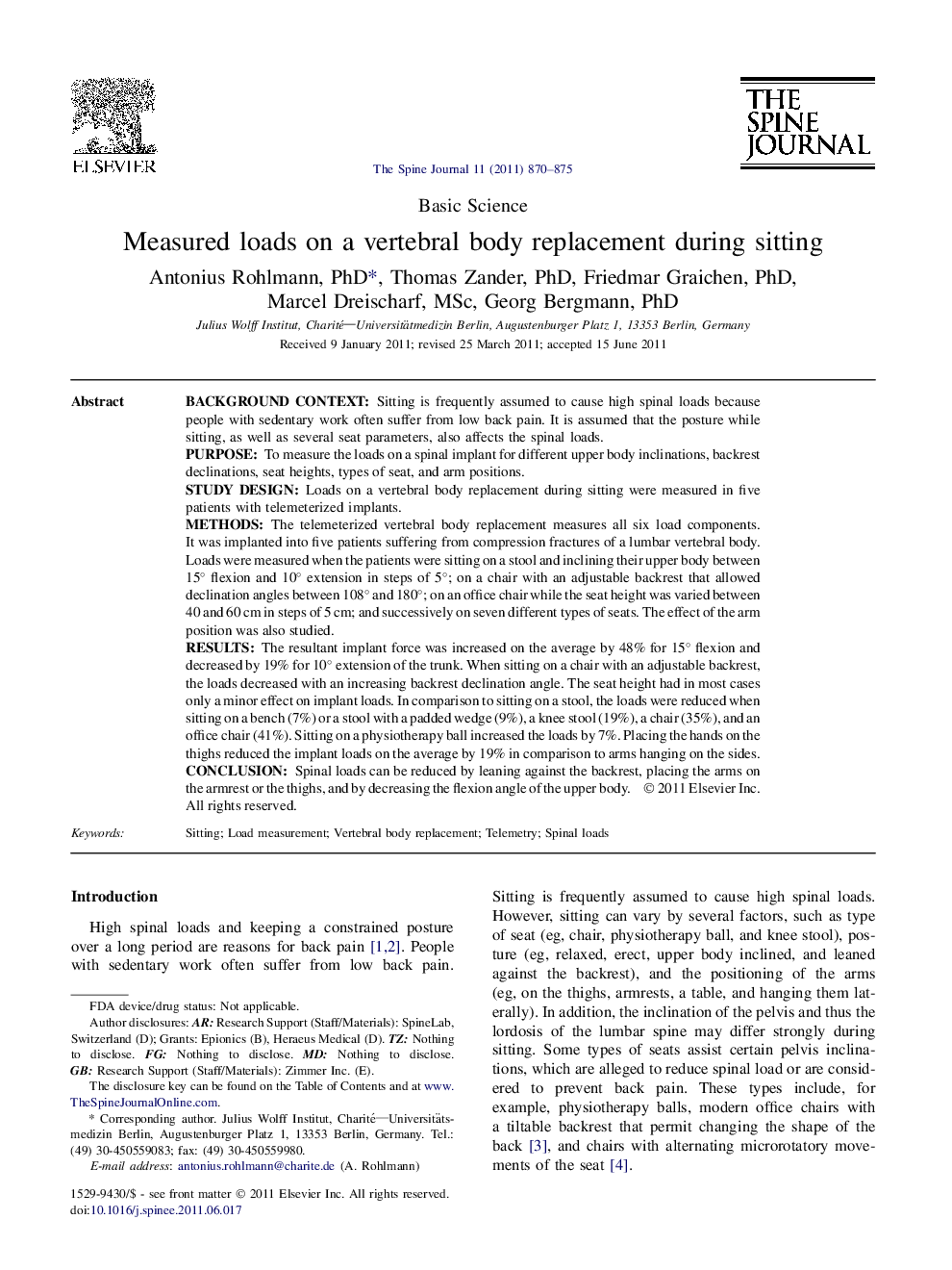| کد مقاله | کد نشریه | سال انتشار | مقاله انگلیسی | نسخه تمام متن |
|---|---|---|---|---|
| 4098938 | 1268627 | 2011 | 6 صفحه PDF | دانلود رایگان |

Background contextSitting is frequently assumed to cause high spinal loads because people with sedentary work often suffer from low back pain. It is assumed that the posture while sitting, as well as several seat parameters, also affects the spinal loads.PurposeTo measure the loads on a spinal implant for different upper body inclinations, backrest declinations, seat heights, types of seat, and arm positions.Study designLoads on a vertebral body replacement during sitting were measured in five patients with telemeterized implants.MethodsThe telemeterized vertebral body replacement measures all six load components. It was implanted into five patients suffering from compression fractures of a lumbar vertebral body. Loads were measured when the patients were sitting on a stool and inclining their upper body between 15° flexion and 10° extension in steps of 5°; on a chair with an adjustable backrest that allowed declination angles between 108° and 180°; on an office chair while the seat height was varied between 40 and 60 cm in steps of 5 cm; and successively on seven different types of seats. The effect of the arm position was also studied.ResultsThe resultant implant force was increased on the average by 48% for 15° flexion and decreased by 19% for 10° extension of the trunk. When sitting on a chair with an adjustable backrest, the loads decreased with an increasing backrest declination angle. The seat height had in most cases only a minor effect on implant loads. In comparison to sitting on a stool, the loads were reduced when sitting on a bench (7%) or a stool with a padded wedge (9%), a knee stool (19%), a chair (35%), and an office chair (41%). Sitting on a physiotherapy ball increased the loads by 7%. Placing the hands on the thighs reduced the implant loads on the average by 19% in comparison to arms hanging on the sides.ConclusionSpinal loads can be reduced by leaning against the backrest, placing the arms on the armrest or the thighs, and by decreasing the flexion angle of the upper body.
Journal: The Spine Journal - Volume 11, Issue 9, September 2011, Pages 870–875